solar system
Latest
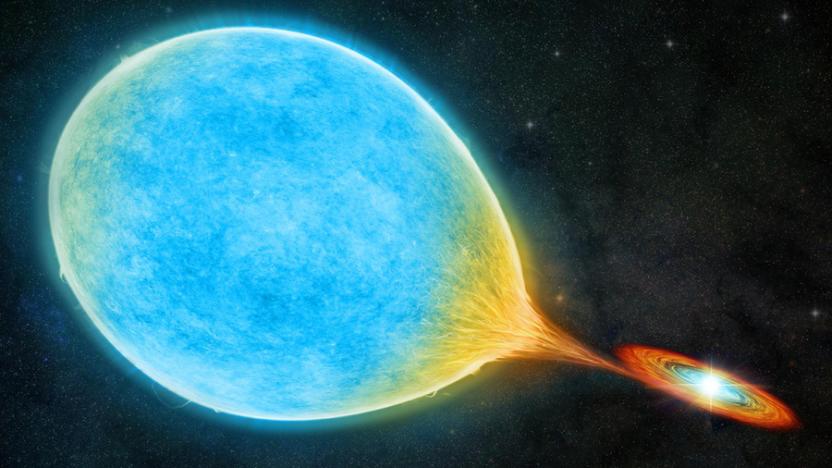
Researchers discover star being consumed by its smaller, deader neighbor
This 'cataclysmic variable' is around 3,000 light years away from Earth.

First full asteroid return sample confirms early Solar System origins
Scientists have studied their first full asteroid return sample, and it confirms Ryugu is made of extremely primitive Solar System material.
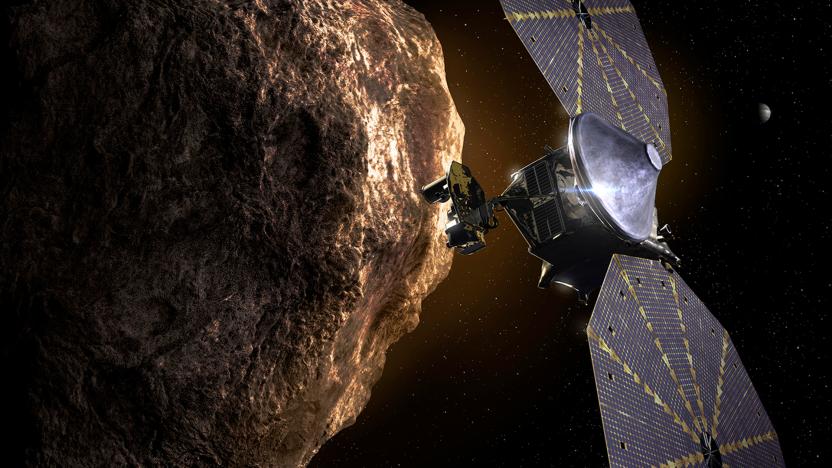
NASA launches mission to explore Solar System 'fossils'
NASA has launched Lucy, a mission that will explore the 'fossils' of Solar System planetary formation among Jupiter's asteroids.

Planet orbiting a dead star previews our own solar system's fate
Scientists have spotted a Jupiter-like exoplanet orbiting a dead star that was once like our Sun.

Two red objects between Mars and Jupiter may explain how the solar system formed
Two unusually red objects in the asteroid belt between Jupiter and Mars may have originated from farther in the solar system.
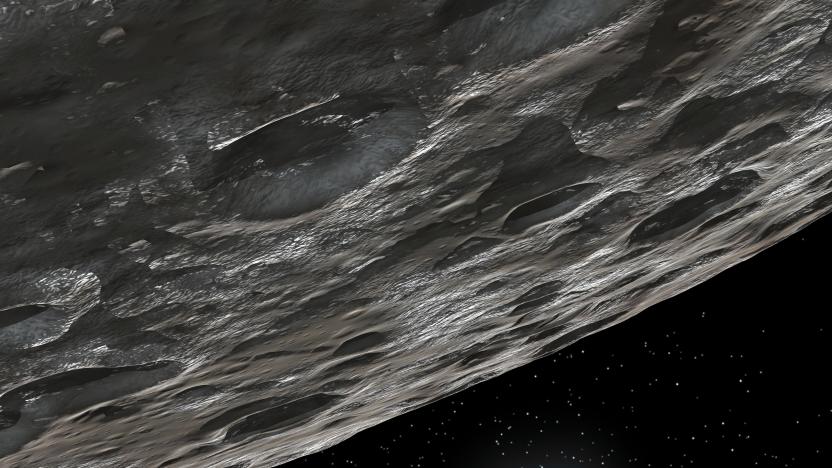
Astronomers confirm the most distant object in the Solar System
Scientists have confirmed that Farfarout is the most distant object in the Solar System — it makes Pluto seem close.
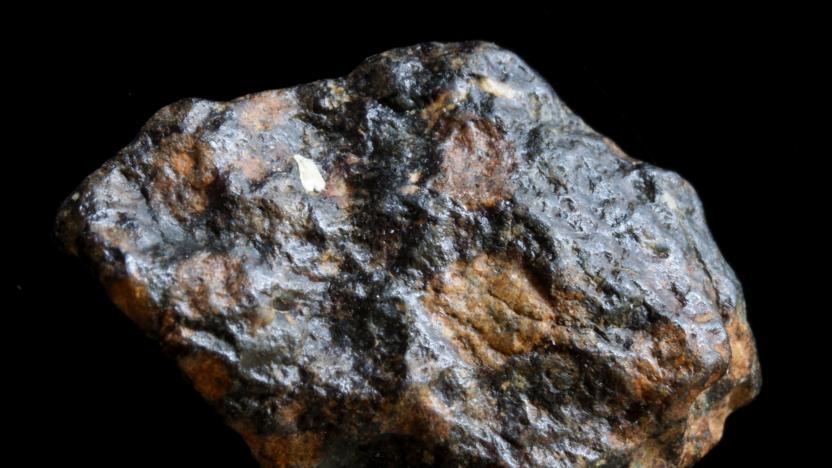
Early Solar System meteorites might explain how Earth got water
Scientists have discovered that meteorites from the early Solar System held water until relatively recently, possibly contributing to life on Earth.

Strange exoplanet discovery makes a case for the elusive 'Planet Nine'
Hubble researchers have determined that a jovian world has such a strange orbit that it might explain our Solar System's theoretical 'Planet Nine.'
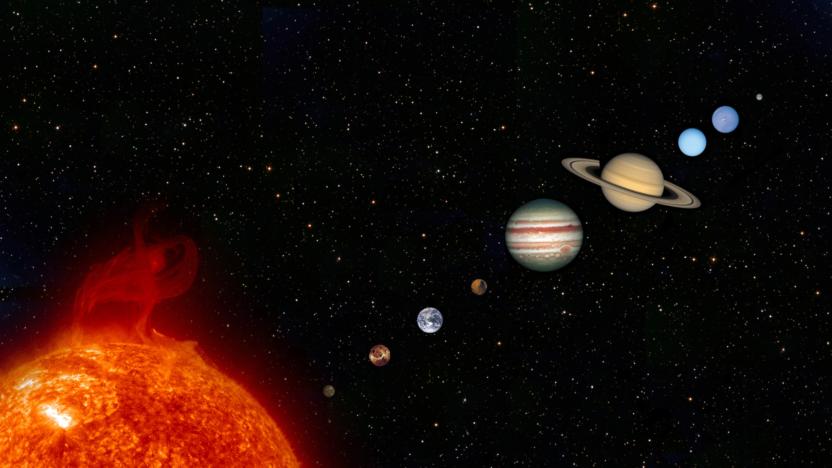
Solar System 'superhighway' could speed up space travel
Scientists have discovered a Solar System 'superhighway' that could lead to faster, more efficient space travel.

3D atom mapping helps investigate the origins of life
Scientists have used 3D atom mapping to find evidence of life-supporting fluids in a meteorite 4.5 billion years old.

NASA is fixing a Voyager 2 snag that deactivated sensors
Voyager 2 might already have crossed into interstellar space, but that isn't stopping NASA from providing some technical help. The administration is in the midst of fixing a problem with the probe that led it to shut off its science equipment. When a delay in the execution of a standard rotation maneuver (to calibrate the magnetic field instrument) left two high-power systems running at the same time, Voyager 2 overdrew from its power supply and tripped a system that shut off the scientific gear to conserve electricity. NASA turned off one of the power-hungry systems and revived the science hardware, but has yet to resume collecting data or otherwise restore business as usual.

NASA's closest-ever Sun flybys reveal how solar wind works
As promised, NASA has presented the first results from the Parker Solar Probe -- and they're already providing a treasure trove of insights regarding the Sun. Most notably, the solar wind doesn't behave entirely like scientists expected. There are flips in the Sun's magnetic field direction (nicknamed "switchbacks") that manifest in the solar wind inside Mercury's orbit, but not further. Moreover, the sideways movement of the solar wind near the Sun was not only "much stronger" than expected, but straightened out sooner than predicted as well.

NASA renames Kuiper Belt object following controversy
NASA's nickname for the distant Kuiper Belt object 2014 MU69, Ultima Thule, has been more than a little contentious. While it has innocuous meanings, Ultima Thule is also the term white supremacists use to refer to a mythical homeland. The agency is sidestepping that controversy, however. It just officially named the object Arrokoth, or "sky" in the Powhatan/Algonquian language. NASA received the consent of the Powhatan tribe before making the change.

European astronauts plan to take pics of a comet from the dawn of time
The European Space Agency (ESA) hopes to photograph a yet-to-be-discovered comet as it approaches Earth's orbit for the first time. To do so, it's developing "Comet Interceptor," a composite made of three individual spacecraft, which will separate to snap photos of the comet from multiple perspectives. The photos will be used to create a 3D model, and ESA hopes to spot material from the dawn of the Solar System.
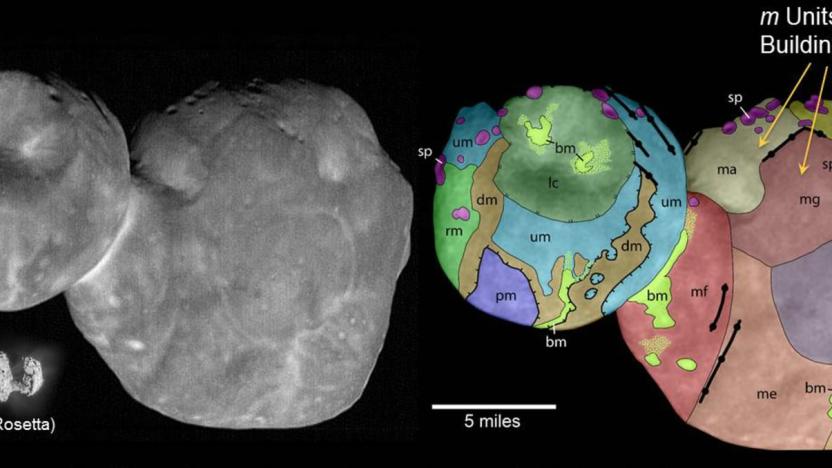
Ultima Thule is unlike anything we’ve seen in the solar system
It turns out Ultima Thule is a kind of lumpy space snowman. If you've been following NASA's New Horizons spacecraft, you know Ultima Thule is an object in Kuiper Belt, the donut-shaped region of icy bodies beyond Pluto. New Horizons made the farthest flyby in human history when it passed Ultima Thule on New Year's Day. As data from New Horizons makes its way back to Earth, scientists are beginning to analyze the data it collected, and they're making surprising discoveries.

Astronomers find pure oxygen leaking from Rosetta's comet
European Space Agency astronomers, with the help of the Rosetta spacecraft, have made a remarkable discovery that could fundamentally alter our understanding of how the solar system formed. They have detected large amounts of pure oxygen (O2) leaking from comet 67P/Churyumov-Gerasimenko. Oxygen is a pretty common element, but because it reacts so easily with other elements it's almost always found in mixed molecules like carbon monoxide (CO), carbon dioxide (CO2) or water (H2O).

Study says early version of our solar system was ruined by Jupiter
A recent study published in the Proceedings of the National Academy of Sciences hypothesizes that when Jupiter rocked up to our then-infant solar system, it obliterated the incumbent planes, and gave us a lot of apparent quirks of our solar system. Konstantin Batygin and Gregory Laughlin's study highlights some curious parts to our galactic home that aren't typically found in other solar systems - particular the lack of planets between Mercury and the Sun itself. Normal solar systems usually pack in a few planets a few times the size of Earth in this gap. Apparently, our solar system's big hitter may have blitzed these planets as they were still forming, while settling into orbit itself. Thanks Jupiter.

EVE Evolved: The top five most dangerous solar systems
EVE Online is a PvP game at its core, with conflict built in at a fundamental level. Pirates lurk around key trade routes and stand ready to pounce on unsuspecting victims, while vast nullsec alliances protect their territories with watchful vigilance and never-ending bloodlust. Wander into the wrong solar system as a new player and your precious ship and cargo will be turned into molten slag and a few points on a killboard quicker than you can say, "Hello, new friend, and what does that red square on your ship mean?" The original map of EVE was generated one evening by an Icelandic developer who could scarcely have known he was deciding the fates of thousands of gamers for years to come. New systems have been added to the game over the years, and a few manual changes have been made to the stargate network, but most of the universe has remained the same for over a decade. In all that time, a few solar systems have stood out as brazen bastions of bastardly behaviour and made their marks on EVE's history. In this week's EVE Evolved, I run down a list of the top five most dangerous solar systems in EVE's long history and delve into why each has earned its reputation as a no-fly-zone for newbies.

Voyager 1 reaches 'magnetic highway,' gets a taste of interstellar space
We're trying, with all our might, to avoid mention of final frontiers. Really we are. But, NASA's Voyager 1 is at the last point before crossing one. Currently the spacecraft is passing through what scientists are calling a "magnetic highway." This region is where the sun's magnetic field lines connect out to interstellar ones, which allows charged particles from our heliosphere (a surrounding cloud of charged particles encasing the sun) to pass out, while higher-energy particles from outside stream in. This area is still considered inside our solar bubble -- due to the lack of change in the direction of magnetic field lines -- but thanks to the ingress of external particles, it does give NASA a taste of conditions in deeper areas of the galaxy. Likewise, the agency believes this is the final... stage before reaching interstellar space, which it's estimated Voyager 1 will encounter in anything from a few months, to a couple of years' time.

NASA's Voyager 1 marks 35th anniversary of its launch, gets photo retrospective in tribute
It's hard to believe at times that the Voyager 1 probe is older than many of us reading this article, but it's true. The official first part of NASA's Voyager program launched just over 35 years ago on September 5th, 1977, carrying not just cameras and sensors to capture the trip but the famous Golden Record documenting humanity for any curious aliens. To mark the occasion, Wired has gathered together one heck of a photo album that covers both Voyager 1's trip as well as that of Voyager 2, which technically launched earlier (August 20th the same year) but took a more roundabout route through the solar system. The gallery reminds us of the amazing scenery beyond Mars and puts our tiny blue ball of a planet in perspective; Earth was just a speck at best when photographed late into Voyager 2's journey. Perhaps the best news surrounding the milestone is simply that both Voyager probes are still running. At 11 billion miles from the Sun, Voyager 1 may be on the cusp of interstellar space and easily represents the most distant human object ever made, not to mention a record-setter for signal transmissions. There's even a chance we'll still be hearing back from the probe for its 50th anniversary -- its power could keep it chatting up to roughly 2025.








